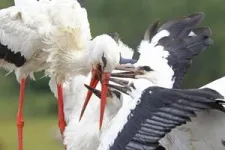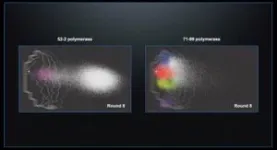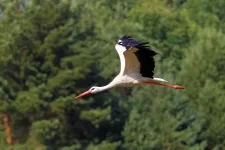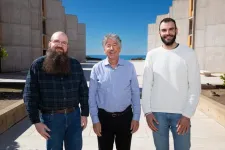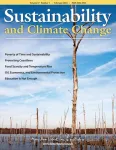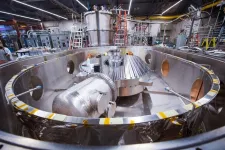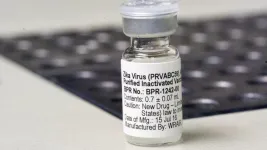(Press-News.org) EMBARGOED UNTIL MARCH 4, 2024 AT 3:00PM U.S EASTERN TIME
An increase in pockets of open water in Antarctica’s sea ice (polynyas) may mean coastal plants and animals could one day establish on the continent, University of Otago-led research suggests.
The research, published in the prestigious international journal Proceedings of the National Academy of Science, aimed at understanding where open water might allow coastal species to settle in the future.
Led by Research Fellow Dr Grant Duffy from Otago’s Department of Marine Science, the team found unexpected evidence the area of polynyas around Antarctica is increasing dramatically, and it follows an intriguing cycle, growing and shrinking roughly every 16 years.
“These trends are fascinating – and we haven’t noticed them before,” Dr Duffy says. “We’re not completely sure what is driving the cyclical pattern, but the ecological implications could be huge.”
Co-author Dr Ariaan Purich, a scientist at Monash University in Australia who studies ocean-atmosphere interactions, says the cyclical patterns appear to line up with atmospheric drivers including the Southern Annular Mode, a climate phenomenon that circles Antarctica and influences weather in New Zealand and Australia.
“Recent record low Antarctic sea ice coverage has been linked with ocean warming,” Dr Purich says.
“In coastal environments, large-scale atmospheric variability and trends can interact with changing ocean conditions to shape the extent of sea ice. These findings give us exciting insights that will help us predict coastal sea ice coverage in the future.”
The senior author on the study, Professor Ceridwen Fraser, also of the Department of Marine Science, says the results are also critically important for predicting what will happen to coastal ecosystems in Antarctica as the climate warms.
“We know that many non-native plants and animals can reach Antarctica, for example by rafting on floating kelp,” Professor Fraser says.
“At the moment, most of them can’t settle because of coastal ice scour. Less ice could create opportunities for some coastal plants and animals to establish – with big implications for native Antarctic coastal ecosystems.”
Dr Duffy agrees. “Our research shows that areas of open water along Antarctic coasts, in particular, are growing in area as the climate warms,” he says. “These changing coastal environments will mean ecosystems have to adapt and change.”
The study was supported by the Marsden Fund of New Zealand, and researchers involved in the work are part of the major national Antarctic programmes Securing Antarctica’s Environmental Future, Australia and Antarctic Science Platform, New Zealand.
END
Antarctica’s coasts are becoming less icy
2024-03-04
ELSE PRESS RELEASES FROM THIS DATE:
New research shows migrating animals learn by experience
2024-03-04
THIS RELEASE IS EMBARGOED UNTIL MARCH 4, 2024, at 3:00 PM U.S. EASTERN TIME.
Research led by scientists from University of Wyoming and Max Planck Institute of Animal Behavior shows that migrating animals refine their behavior as they get older, suggesting that experiential learning is an important part of successful migration.
While genetics and social behavior are important factors shaping animal migrations, information gained through individual experience also appears to help shape migratory movements, says a research team led by Ellen Aikens. Aikens, ...
Modeling the origins of life: New evidence for an “RNA World”
2024-03-04
LA JOLLA (March 4, 2024)—Charles Darwin described evolution as "descent with modification." Genetic information in the form of DNA sequences is copied and passed down from one generation to the next. But this process must also be somewhat flexible, allowing slight variations of genes to arise over time and introduce new traits into the population.
But how did all of this begin? In the origins of life, long before cells and proteins and DNA, could a similar sort of evolution have taken place on a simpler scale? ...
Scientists put forth a smarter way to protect a smarter grid
2024-03-04
RICHLAND, Wash.—There’s a down side to “smart” devices: They can be hacked.
That makes the electric grid, increasingly chock full of devices that interact with one another and make critical decisions, vulnerable to bad actors who might try to turn off the power, damage the system or worse.
But smart devices are a big part of our future as the world moves more toward renewable energy and the many new devices to manage it. Already, such tools play a big role in keeping the power humming. The portion of the grid owned by ...
An evolutionary mystery 125 million years in the making
2024-03-04
Plant genomics has come a long way since Cold Spring Harbor Laboratory (CSHL) helped sequence the first plant genome. But engineering the perfect crop is still, in many ways, a game of chance. Making the same DNA mutation in two different plants doesn’t always give us the crop traits we want. The question is why not? CSHL plant biologists just dug up a reason.
CSHL Professor and HHMI Investigator Zachary Lippman and his team discovered that tomato and Arabidopsis thaliana plants can use very different regulatory systems to control the same exact ...
Data science approach to identifying thermal conductivity-related structural factors in amorphous materials
2024-03-04
1. Using data science techniques, a NIMS–Tohoku University research team has discovered that different thermal conductivities exhibited by an amorphous material with the same composition are attributable to the sizes of atomic rings in its atomic structure. This is one of the first studies demonstrating that the structural features of amorphous materials can be correlated with their physical properties.
2. It is already feasible to synthesize amorphous materials with the same compositions but different thermal conductivities. However, the structural factors responsible for differences in thermal conductivity had yet to be identified due to a lack of appropriate analytical ...
Deciphering the male breast cancer genome
2024-03-04
Male breast cancer has distinct alterations in the tumor genome that may suggest potential treatment targets, according to a study by Weill Cornell Medicine investigators. They have conducted the first whole genome sequencing analysis of male breast cancer, which looked at the complete DNA landscape of tumor samples from 10 patients.
This is an important step in viewing breast cancer in men, which represents less than 1 percent of all breast cancer cases each year, as a unique disease. Though most research has focused on women with breast cancer, the incidence in men has increased at a much faster rate than in women over the last 40 years. Also, ...
Detection of suicide-related emergencies among children using real-world clinical data: A free webinar from the Brain & Behavior Research Foundation
2024-03-04
According to the CDC, the suicide rate among young people ages 10‒24 increased 62% from 2007 through 2021. The CDC’s Youth Risk Behavior Summary reports that in 2021, 22% of high school students seriously considered attempting suicide during the year and 18% made a suicide plan. These statistics indicate a mental health crisis facing our youth. How can we identify children in crisis? Who is being missed?
The Brain & Behavior Research Foundation (BBRF) is hosting a free webinar, “Detection of Suicide-Related Emergencies Among ...
Editor-in-Chief of Sustainability and Climate Change Madhavi Venkatesan named USA TODAY Woman of the Year for Massachusetts for leading plastic bottle ban efforts
2024-03-04
Madhavi Venkatesan, PhD, Editor-in-Chief of the peer-reviewed journal Sustainability and Climate Change and founder of Sustainable Practices, has been named USA TODAY Woman of the Year for the state of Massachusetts in recognition of her outstanding efforts to eliminate single-use plastic bottles across Cape Cod and the Islands.
With economics and sustainability at the forefront, Venkatesan established Sustainable Practices in 2016, aiming to address pressing environmental issues through innovative solutions. Since then, she and her nonprofit team have spearheaded ...
Tests show high-temperature superconducting magnets are ready for fusion
2024-03-04
In the predawn hours of Sept. 5, 2021, engineers achieved a major milestone in the labs of MIT’s Plasma Science and Fusion Center (PSFC), when a new type of magnet, made from high-temperature superconducting material, achieved a world-record magnetic field strength of 20 tesla for a large-scale magnet. That’s the intensity needed to build a fusion power plant that is expected to produce a net output of power and potentially usher in an era of virtually limitless power production.
The test was immediately declared ...
Zika vaccine safe, effective when administered during pregnancy
2024-03-04
A vaccine against Zika virus is safe and effective when administered both before and during pregnancy, according to new research published in npj Vaccines.
The purified, inactivated Zika vaccine (ZPIV) candidate, developed by Walter Reed Army Institute of Research (WRAIR), is being evaluated in animal models at Texas Biomedical Research Institute (Texas Biomed) in collaboration with WRAIR and Trudeau Institute in New York.
The vaccine candidate has previously been shown to effectively block prenatal Zika virus transmission when given to nonhuman primates ...

